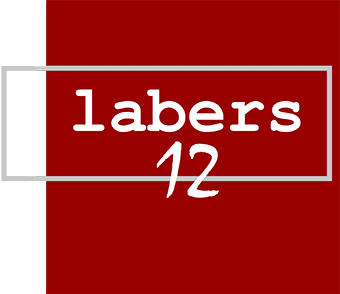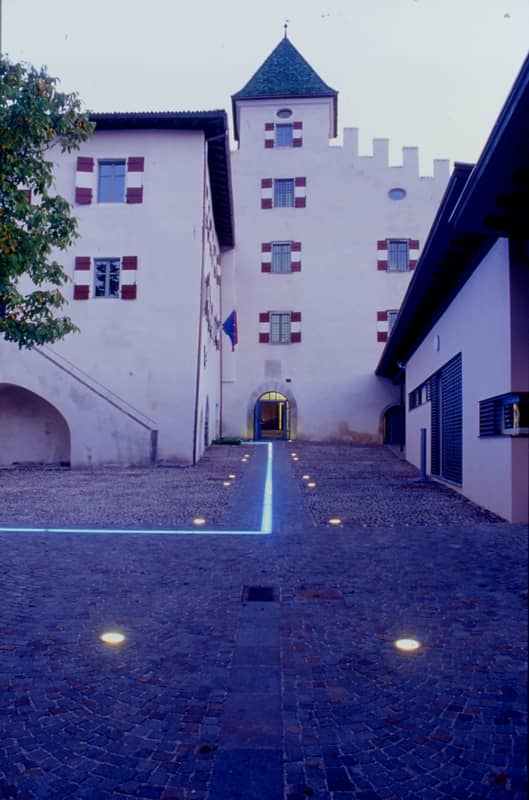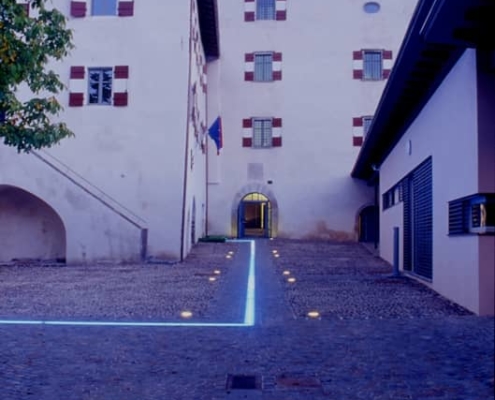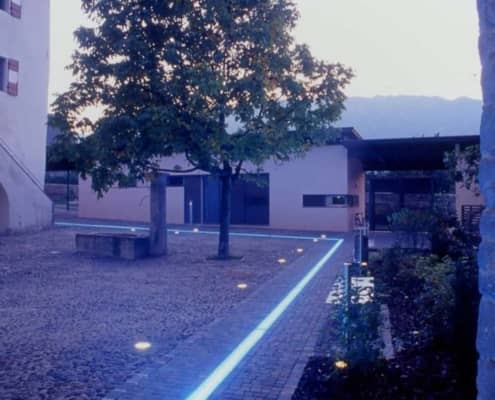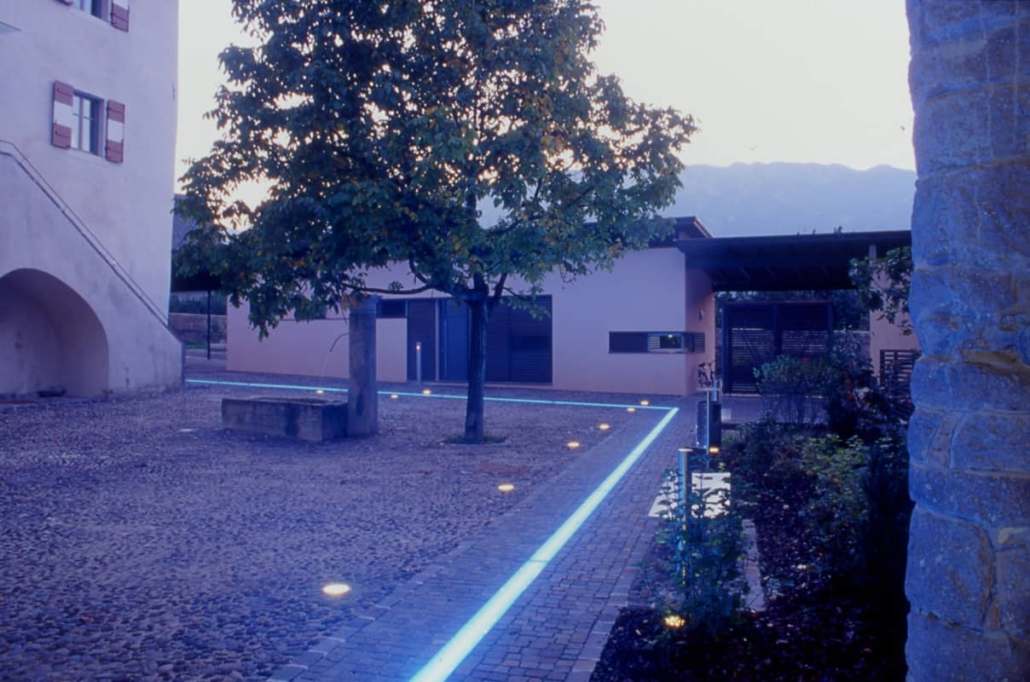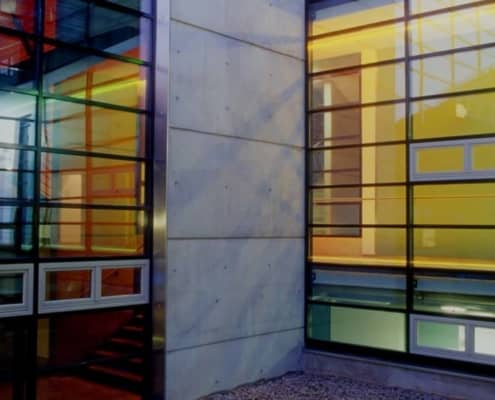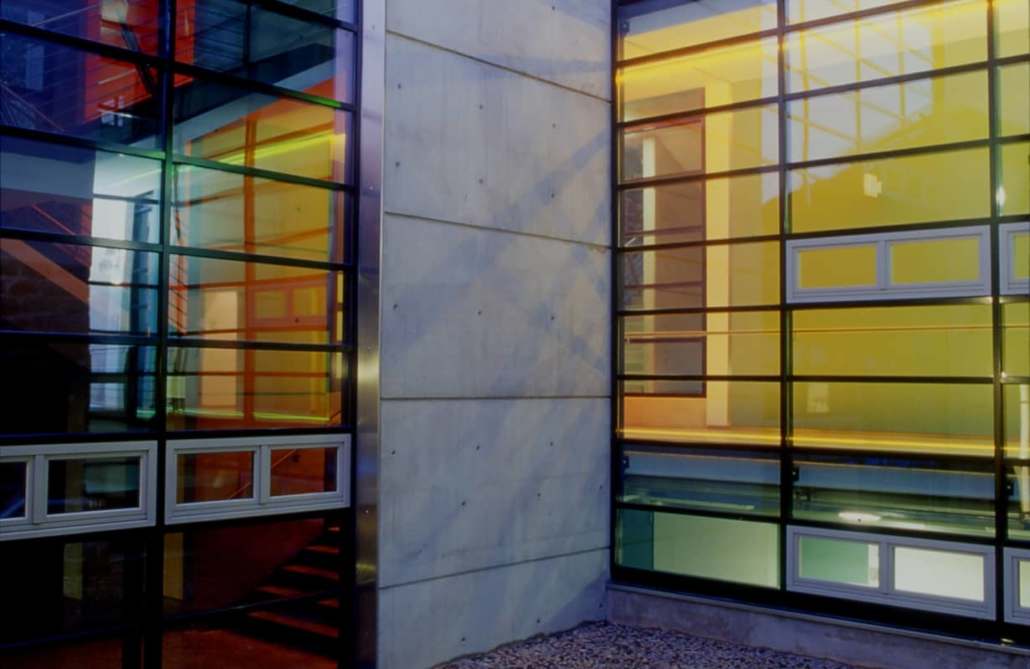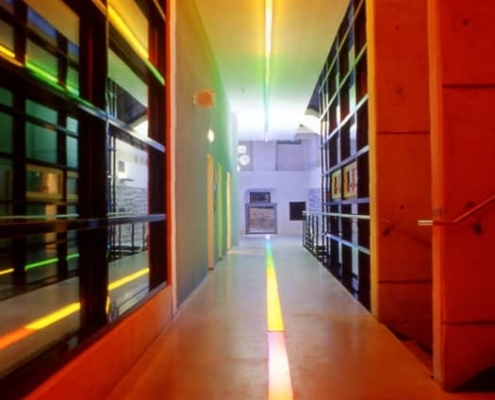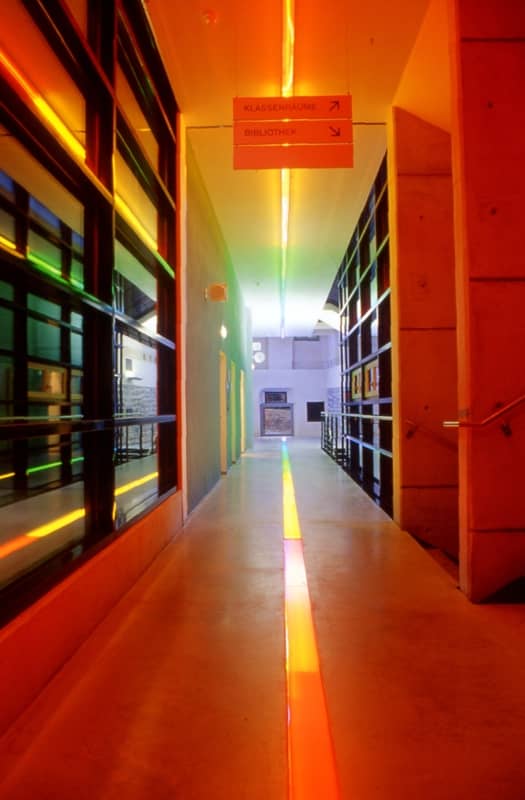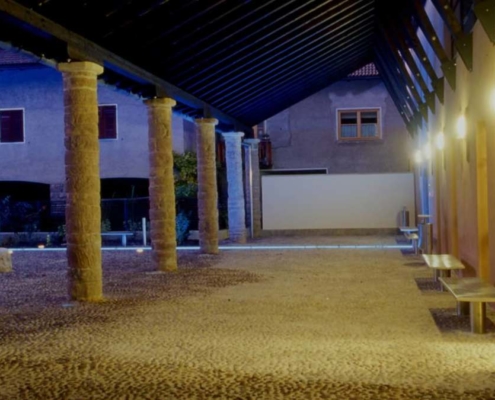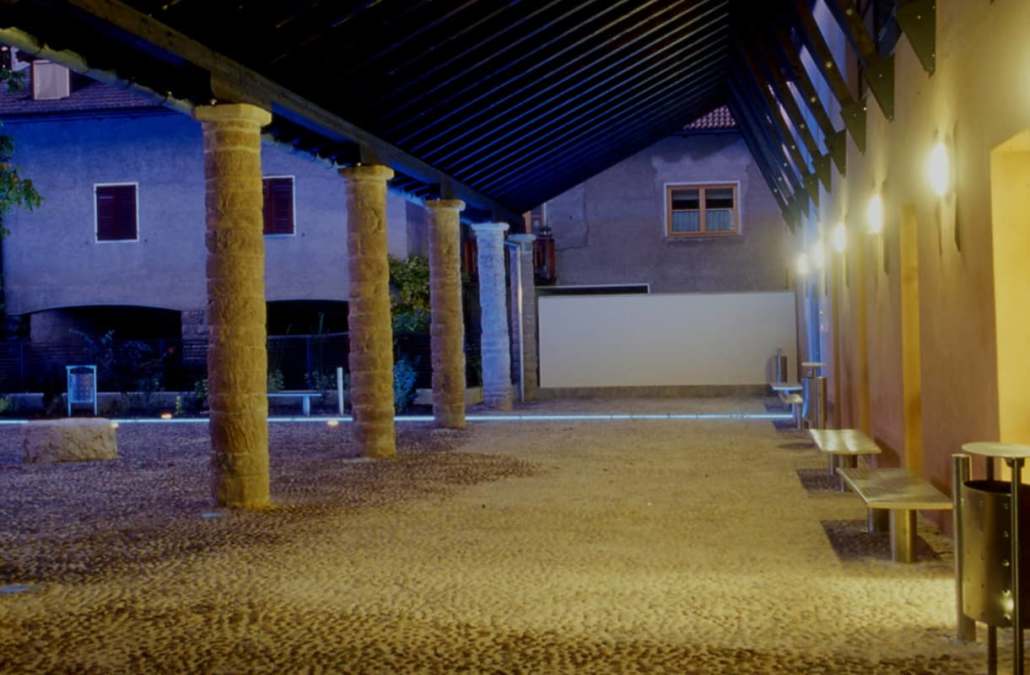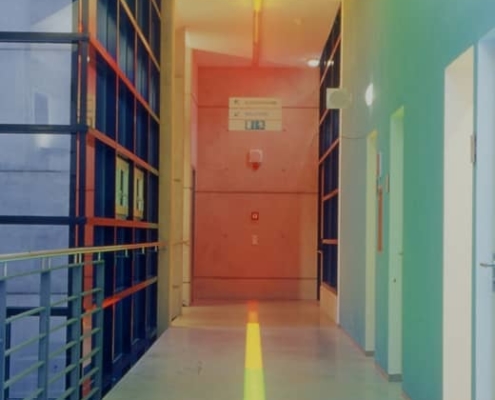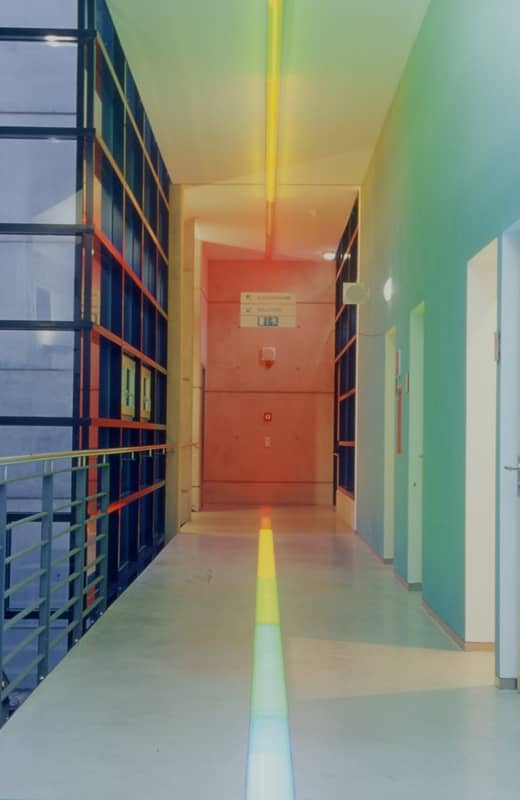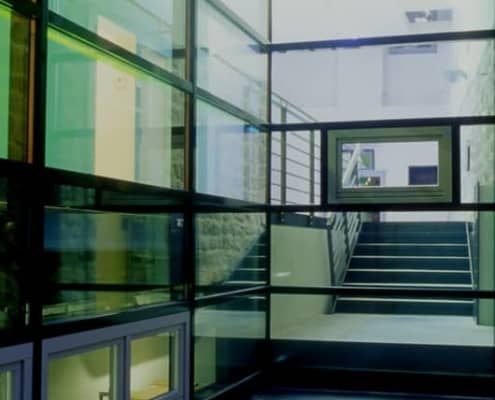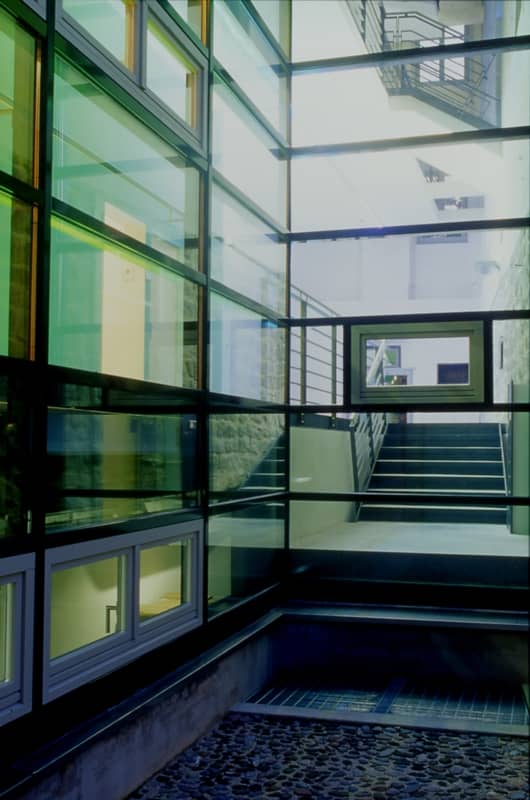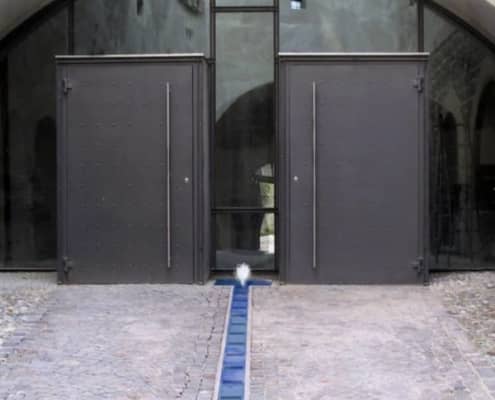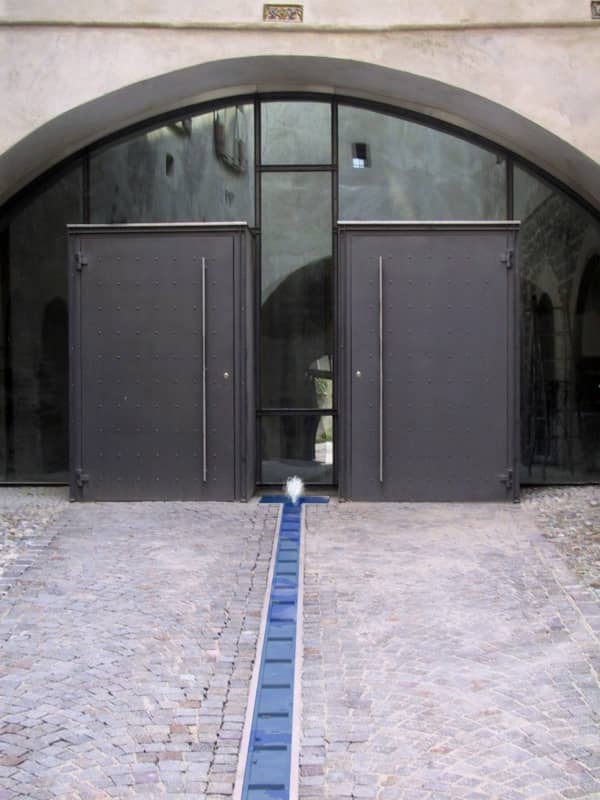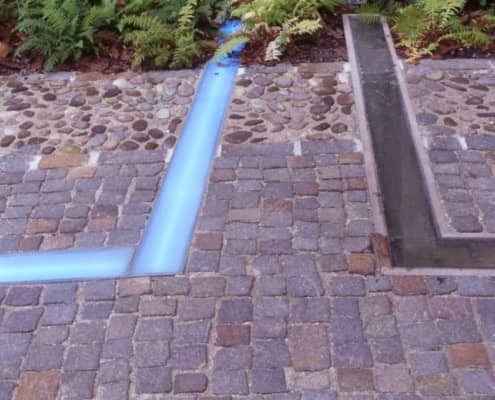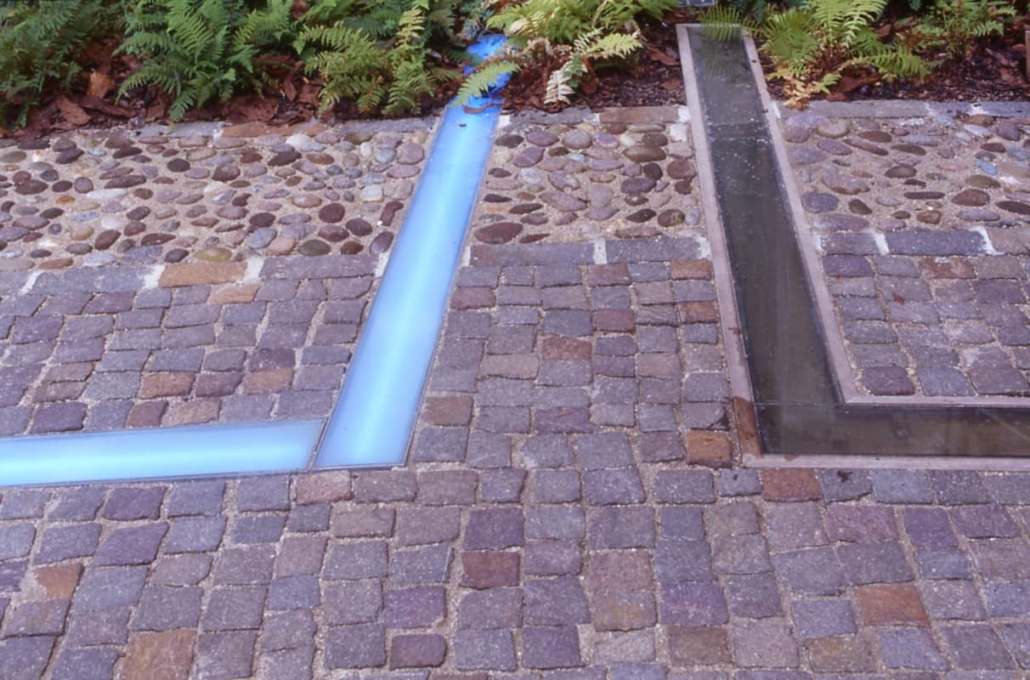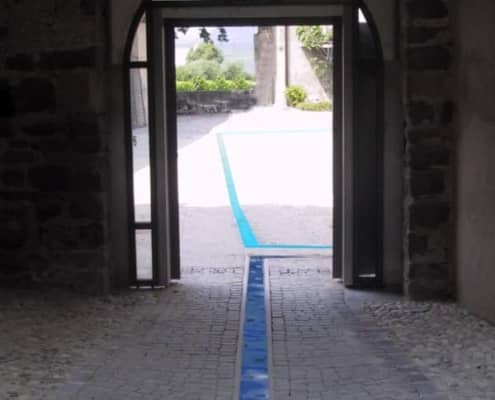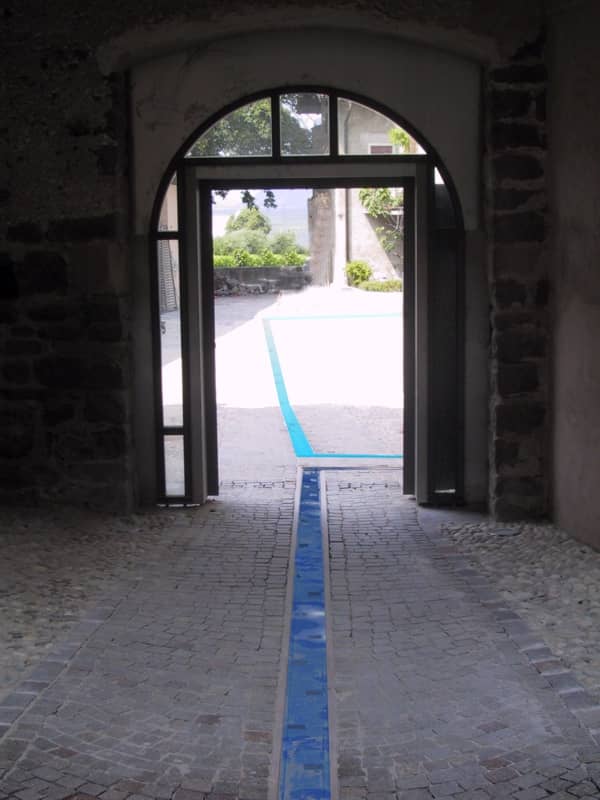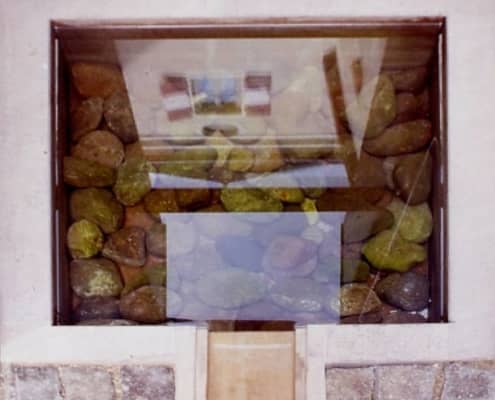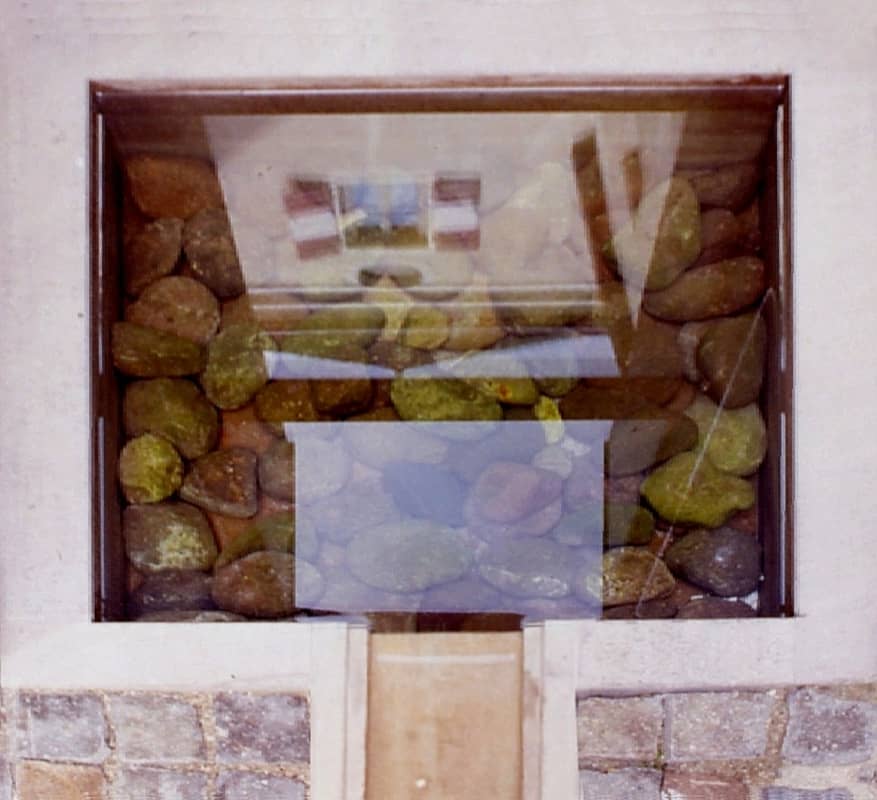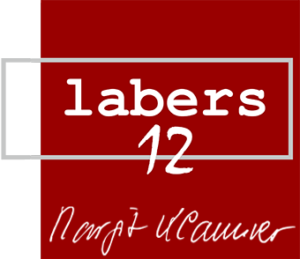Earth Water Light
2001 High school for agriculture, Castel Baumgarten, Ora
The closer art gets to nature, the more it leaves the space of art.
When we talk about space, we normally think of Euclidean three-dimensional space, the space of mathematicians and physicists. Space that is orientated towards lengths and widths, as we learnt at school. It is the space that can be expressed in metres and centimetres, the architectural space that is limited by fixed sizes and is finite. Everywhere there is a horizon and everywhere there are boundaries. We feel safe in such spaces.
Every now and then, however, there are also clearly defined spaces, enclosed by walls, which point far beyond the concrete spaces that can be directly experienced in life. Relationships are established in these spaces that do not exist in mathematical space. The paradox of these spaces is that they have sharply defined boundaries between flowing transitions. Spaces that can be experienced grow into infinite expanses, not because units of measurement are cancelled or space detaches itself from reality, but because a relationship is created between the human and the abstract. Between order and chaos, between nature and art. The differences are cancelled out and become blurred. They maintain a balance and thus do not become something merely imagined or even imaginary, but a reality that can be experienced directly.
Spaces can therefore restrict and expand. Offer opportunities for development and restrict them. Our personal and collective lives take place in them. The material nature of spaces, the quality of the processing of things in the space, the guidance of light, the mathematical sizes….. the HOW of all this determines whether spaces help or hinder us. Space as a playground for events. Whoever designs a specific space takes responsibility for all those who use this space, even if the space is shaped again by everyone who enters it. The space changes with the people who spend time in it and with the life that takes place in it. However, if we perceive space as a place that limits or separates something, be it nature from culture or the concrete thing from the surrounding space, we are restricting instead of connecting. However, since people are also located in space, and not like an object, but are themselves space, everything interacts with everything else.
Spaces connect people with the past, present and future. Spaces are lived time.
Earth and space – reality and myth. Art does not shy away from reversing things or spatial dependencies. It is always ready to bring the outside inside in order to unite perspectives and dimensions. It utilises the power of imagination as the most natural feeling. Every intervention becomes reality because it combines concrete thoughts and imaginary images. Art opens the door to one’s own origins, in which temptations accumulate and the desire to tap into one’s own being in its underground. It sensitises the visible, refines daily life in order to discover where one stands as an individual. Art is like the god of the threshold, like Janus with the double face.
- In collaboration with architect Wolfgang Piller as the designer of the building
